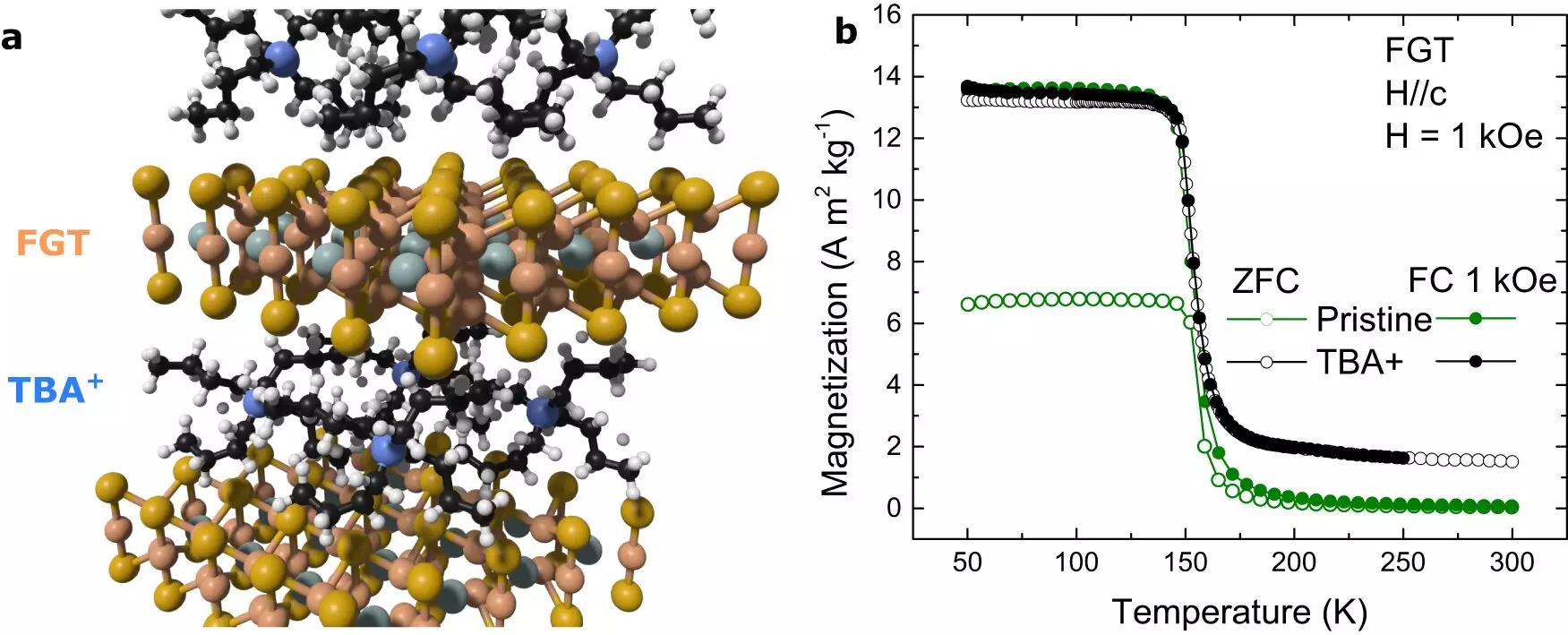In the quest for increased data storage and faster-performing computers, researchers at The University of Texas at El Paso have made a groundbreaking discovery. Led by Srinivasa Singamaneni, they have developed a new type of magnet with enormous potential in the computing world. This 2D magnet, described in the journal npj 2D Materials and Applications, could revolutionize the future of computational power.
Singamaneni and his team have been working on a class of magnets called van der Waals magnets since 2021. These magnets, which are only one layer thick but possess length and width, have piqued the interest of researchers due to their tiny size. Traditional magnets found in laptops, speakers, headsets, and MRI scanners could potentially be replaced by these quantum magnets in the future.
While van der Waals magnets have shown promise, they have thus far been limited to functioning at temperatures below freezing. Singamaneni’s breakthrough involves incorporating a low-cost organic material known as tetrabutylammonium between the atomic layers of the magnet. This simple chemical treatment allows the magnet to operate at temperatures of up to 170 degrees Fahrenheit. This development is significant because it expands the practical applications of van der Waals magnets, making them more viable for use in various industries.
Singamaneni believes that this breakthrough in 2D magnetism could be transformative for the industry. The team has already demonstrated the magnet’s potential in the laboratory, but their work does not stop there. They plan to continue studying and perfecting the material to maximize its capabilities in computing.
Singamaneni collaborated with researchers from esteemed institutions such as Stanford University, The University of Edinburgh, Los Alamos National Lab, the National Institute of Standards and Technology (NIST), and Brookhaven National Lab. This interdisciplinary approach has allowed for a comprehensive exploration of the new magnet’s properties and potential applications.
The groundbreaking study involved the contributions of various researchers. Notable contributors include UTEP alumnus Hector Iturriaga, currently at Stanford University, UTEP graduate student Luis M. Martinez, and UTEP scientists Sreeprasad Sreenivasan, Ph.D., and Mohamed Sanad, Ph.D. Collaborators from NIST, University of Edinburgh, Los Alamos National Lab, and Brookhaven National Lab also played essential roles in this research.
The development of this new type of magnet marks an important milestone in the field of magnet technology. With its ability to operate at higher temperatures and its potential applications in computing, this breakthrough has the power to redefine the future of computational power. Singamaneni and his team’s innovative approach provides a promising foundation for further advancements and discoveries in the field of 2D magnetism.


Leave a Reply